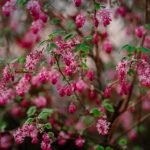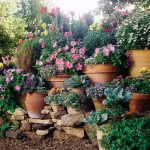Transforming your outdoor space with creative landscaping ideas and images can breathe new life into your home. Whether you have a large backyard or a small balcony, incorporating elements of nature and hardscaping can completely change the look and feel of your outdoor area.
In this article, we will explore the endless possibilities of landscaping, from using plants and trees to creating functional spaces for entertainment and relaxation. We will also provide tips for maintaining your landscape throughout the year and showcase inspirational images of stunning landscaping designs for your inspiration.
When it comes to landscaping, the possibilities are truly endless. By incorporating elements of nature such as plants, trees, and flowers, you can enhance the natural beauty of your outdoor space. From vibrant flower beds to lush greenery, there are countless ways to bring life and color to your landscape. Additionally, designing functional spaces for entertaining, relaxation, and practical use can further elevate your outdoor area, making it a place where you can fully enjoy your time outside.
Incorporating hardscaping elements such as paths, decks, and other non-plant features can also add depth and character to your landscape. These elements not only add visual interest but also create functional areas within your outdoor space. With the right combination of hardscaping and natural elements, you can create a dynamic and inviting landscape that suits your personal style and needs.
Incorporating Elements of Nature
When it comes to transforming your outdoor space, incorporating elements of nature such as plants, trees, and flowers can have a profound impact on the overall aesthetic and atmosphere of your landscape. Whether you’re looking to create a lush and vibrant garden or a serene and peaceful retreat, the right combination of greenery can make all the difference. Here are some landscaping ideas for using plants, trees, and flowers to enhance your landscape:
- Organic Garden: Create a beautiful organic garden with a variety of vegetables, fruits, and herbs. Not only will this add color and texture to your landscape, but it will also provide you with fresh produce right from your own backyard.
- Native Plants: Incorporate native plants into your landscape design to promote biodiversity and attract local wildlife. Choose species that are well-suited to your region’s climate and soil conditions for low-maintenance beauty.
- Flower Beds: Design flower beds in various shapes and sizes throughout your yard to add pops of color and visual interest. Mix different types of flowers that bloom at different times of the year to ensure year-round beauty.
Landscaping with plants, trees, and flowers offers endless possibilities for creating a personalized outdoor oasis. Take the time to consider which elements of nature will best suit your vision for your landscape.
For more landscaping ideas and images that incorporate elements of nature into outdoor spaces, take a look at our gallery below for inspiration. Whether you’re contemplating adding flower beds or creating an organic garden, there’s something for everyone in these stunning examples. Let these images inspire you as you plan out your own landscaping project.
Creating Functional Spaces
When it comes to landscaping, creating functional spaces is essential for ensuring that your outdoor area serves a variety of purposes. Whether you want to entertain guests, relax in a peaceful oasis, or simply make the most of your outdoor space, thoughtful design is key. By incorporating elements such as seating areas, fire pits, and designated dining spots, you can transform your landscape into a versatile and inviting space.
Incorporating Entertaining Areas
One popular landscaping trend is the incorporation of entertaining areas such as patios, decks, or outdoor kitchens. These spaces are designed to accommodate larger groups of people and often feature comfortable seating, cooking facilities, and other amenities. When planning these areas, consider factors such as proximity to the kitchen for easy access to food and drinks, as well as creating a sense of flow between indoor and outdoor spaces.
Designing Relaxation Zones
Creating a tranquil retreat within your landscape can provide a much-needed escape from the hustle and bustle of everyday life. Incorporate elements such as hammocks, lounge chairs, or water features to promote relaxation and rejuvenation. Additionally, using natural materials like wood and stone can help create a serene environment that encourages peaceful contemplation.
Practical Use Areas
In addition to entertaining and relaxation zones, practical use areas are also important considerations when designing your landscape. For example, installing pathways with durable materials like gravel or pavers can provide safe navigation throughout the yard. Likewise, incorporating storage solutions for tools or outdoor equipment can help keep your space organized and functional. By carefully planning these areas within your landscape design, you can ensure that every aspect of your outdoor space is utilized to its full potential.
By thoughtfully planning each functional area within your landscape design and selecting elements that cater to entertaining, relaxation,and practical use,you can create an outdoor environment with wide-ranging benefits.Use these ideas as inspiration,but don’t be afraid to incorporate your own creative touches in order to continue transforming your unique outdoor space into something truly extraordinary.
Hardscaping
When it comes to adding paths to your landscape, consider using materials such as gravel, pavers, or stepping stones to offer a defined route through your garden. Pathways not only enhance the aesthetics of your landscape but also provide practical access around your outdoor space.
Similarly, decks and patios can be added to create designated areas for entertaining and relaxation. Whether constructed from wood, composite materials, or stone, these features can help you make the most of your outdoor space by providing a place for dining al fresco or enjoying the sunshine.
Incorporating elements like pergolas, fences, and walls can also add structure to your landscape while enhancing privacy and creating visual interest. These hardscape features can define specific areas within your garden while contributing to the overall design aesthetic. By carefully planning and implementing these non-plant elements into your landscaping design, you’ll be able to achieve a cohesive and functional outdoor space that suits your lifestyle and complements the natural beauty of your plants and trees.
Seasonal Changes
Spring
As the weather warms up, spring is the perfect time to get your landscape in shape for the rest of the year. Start by cleaning up any debris that has accumulated over the winter months and pruning any shrubs or trees that need it. This is also a great time to add new plants and flowers to your landscape, providing a burst of color and life after the dreary months of winter.
Summer
During the hot summer months, it’s important to keep your landscaping well-watered and maintained. Consider installing an irrigation system to help keep your plants and grass healthy without having to spend hours manually watering them every week. Additionally, be sure to trim back any overgrown vegetation and keep an eye out for pests and diseases that can harm your plants.
Fall
As the temperatures begin to cool down, it’s time to start preparing your landscape for the colder months ahead. Rake up fallen leaves, aerate your lawn, and plant fall-blooming flowers like mums to keep some color in your yard as the season changes. This is also a good time to perform any necessary maintenance on hardscaping elements like patios or decks before winter sets in.
By following these seasonal tips, you can ensure that your landscape looks its best throughout the year, providing an inviting outdoor space for you and your family to enjoy.
Landscaping for Small Spaces
In addition to vertical landscaping, utilizing multipurpose furniture and accessories can help make the most of limited outdoor areas. For example, investing in foldable or stackable furniture allows for easy storage when not in use, maximizing the available space. Incorporating dual-purpose items like benches with built-in storage or tables that double as planters can also contribute to a more efficient use of space while adding aesthetic appeal to the area.
When landscaping small spaces, it’s essential to carefully plan the layout to ensure that every element serves a purpose. Utilizing compact or dwarf varieties of plants and trees can help prevent overcrowding while still adding visual interest. By strategically placing these elements and creating defined zones for different purposes such as dining, lounging, or gardening, homeowners can make the most of their limited outdoor areas while enjoying a beautiful and functional landscape.
For those seeking inspiration for landscaping ideas for small spaces, browsing through images of successful small-space landscapes can provide valuable insights. Whether it’s creating an urban oasis on a tiny balcony or turning a narrow strip of yard into a cozy retreat, there are countless innovative solutions that can be adapted to suit any small outdoor area.
Engaging with landscaping images can spark creativity and help homeowners envision how they can transform their own compact outdoor spaces into inviting havens.
Inspirational Images
Incorporating elements of nature such as plants, trees, and flowers can significantly enhance the overall look and feel of your landscaping design. The right selection of flora can help create a peaceful and serene atmosphere, add color and texture to the space, and even attract wildlife.
Consider incorporating a variety of plants with different heights, colors, and blooming seasons to create an aesthetically pleasing landscape that changes throughout the year. Additionally, utilizing native plants can help promote biodiversity and support local ecosystems.
When designing your landscape, it’s essential to create functional spaces that cater to different needs. Whether it’s an area for entertaining guests, a cozy spot for relaxation, or a practical space for activities like gardening or outdoor cooking, each area should serve a purpose while harmoniously blending into the overall design. Utilizing features like patios, pergolas, fire pits, or water features can help delineate these functional spaces while adding visual interest to the landscape.
For homeowners with limited outdoor areas, there are still plenty of landscaping ideas that can make the most out of small spaces. Vertical gardens, potted plants, hanging baskets, and cleverly designed multi-purpose furniture are just a few examples of how you can maximize every inch of available space without sacrificing style and functionality.
| Landscaping Element | Description |
|---|---|
| Incorporating Elements of Nature | Selection of flora can create a peaceful atmosphere and add color to the space. |
| Creating Functional Spaces | Designated areas for entertainment, relaxation and practical use. |
| Landscaping For Small Spaces | Ideas for maximizing limited outdoor areas using vertical gardens and potted plants. |
DIY Ideas
Landscaping doesn’t have to break the bank. There are plenty of budget-friendly ideas for homeowners to tackle themselves, transforming their outdoor space without spending a fortune. One popular DIY landscaping project is creating a vegetable or herb garden. Not only does this add visual interest to your landscape, but it also provides fresh produce for your household, saving you money in the long run.
Another cost-effective landscaping idea is to build a fire pit. This can be as simple as creating a circle of stones in your backyard, or more complex with the use of bricks and mortar. Having a fire pit area adds an inviting focal point to your outdoor space and provides a cozy spot for gathering with friends and family.
Additionally, incorporating mulch into your landscaping not only adds aesthetic appeal but also helps retain moisture in the soil, reducing water usage and potentially saving on water bills. Mulch is an affordable and easy DIY landscaping solution that can make a big impact.
| Landscaping Project | Estimated Cost |
|---|---|
| Vegetable/Herb Garden | $50-$200 (depending on size) |
| Fire Pit | $100-$500 (depending on materials) |
| Mulching | $100-$300 (total yard) |
By taking on these budget-friendly landscaping projects yourself, you can save money while creating a beautiful outdoor oasis. The satisfaction of having transformed your landscape with your own hands is an added bonus that makes DIY landscaping projects truly rewarding. With some creativity and effort, homeowners can achieve stunning results without breaking the bank.
Conclusion
In conclusion, landscaping offers endless possibilities for transforming your outdoor space into a beautiful and functional area. By incorporating elements of nature such as plants, trees, and flowers, you can enhance the natural beauty of your landscape and create a peaceful oasis right in your own backyard. Additionally, creating functional spaces for entertaining, relaxation, and practical use adds versatility to your outdoor area and makes it an extension of your home.
Furthermore, hardscaping elements like paths, decks, and other non-plant features can add structure and style to your landscape design. These elements not only provide visual interest but also serve a practical purpose in guiding traffic flow through the outdoor space.
It’s important to consider seasonal changes and maintenance when planning and caring for your landscape throughout the year. By choosing appropriate plants and implementing proper care techniques, you can ensure that your outdoor space remains vibrant and inviting no matter the season.
Lastly, for those with limited outdoor areas, there are still plenty of landscaping ideas to make the most out of small spaces. Whether it’s vertical gardening or creative layout designs, small yards have just as much potential as larger ones.
And for homeowners on a budget or those who enjoy DIY projects, there are countless budget-friendly landscaping ideas that can be implemented with a little elbow grease and creativity. Ultimately, by exploring inspirational images of stunning landscaping designs for inspiration, readers can take their outdoor spaces to the next level with creative landscaping ideas that reflect their personal style and preferences.
Frequently Asked Questions
What Is the Least Expensive Way to Landscape?
The least expensive way to landscape is to start with a well-thought-out plan. By carefully considering the layout and design, you can minimize the need for costly materials or professional services. Utilizing low-maintenance plants, opting for seed instead of sod, and taking advantage of natural features like rocks or mulch can also help keep costs down.
What Are the 4 Categories of Landscaping?
The four categories of landscaping are hardscape, softscape, garden features, and outdoor living spaces. Hardscape refers to the non-living elements such as pathways, fences, and walls. Softscape includes the living elements such as plants, trees, and flowers.
Garden features can be anything from water fountains to fire pits. Lastly, outdoor living spaces involve creating areas for dining, entertaining, or relaxing in your yard.
Is There a Free App to Design Landscape?
Yes, there are several free apps available that allow users to design landscapes on their mobile devices or tablets. These apps typically provide features such as virtual planning tools, plant libraries, and even 3D rendering capabilities to help visualize the finished project.
Some popular free landscape design apps include iScape, Home Outside, and PRO Landscape Home. These apps can be valuable resources for DIY landscapers or homeowners looking to brainstorm ideas before tackling a project.

Welcome to my gardening blog! I am passionate about plants and enjoy sharing my knowledge and experiences with others. In this blog, I will write about everything related to gardening, from tips on how to get started to updates on my own garden projects.





